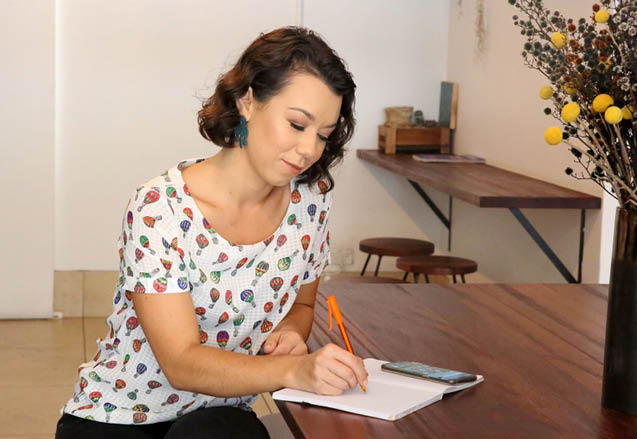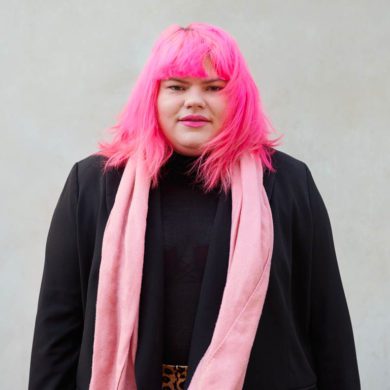During Australia’s first lockdown last year, digital marketer Lauren Hamilton experienced the brutal reality of trying to keep her business going while home-schooling two, primary school-aged children.
She and her husband both attempted to continue working full-time while supporting their nine and seven year olds through endless zooms and remote-learning tasks – with the result that “we both worked every night until midnight after they went to bed, and we all screamed at each other: it was horrible”.
By the time the latest Sydney lockdown rolled around, Lauren had settled on a different model. She scaled back her work, roughly halving it.
Now, Lauren takes on the remote learning and domestic load while her husband, Shaun, “pops out to help when he’s able to. His employer is aware he has kids, says Lauren, but “he’s expected to be in five to six hours a day of Zoom calls – how’s that going to be possible unless someone else is doing the home-schooling?”

Meanwhile, Lauren is revisiting grade 3 maths while her business, which employed several subcontractors at the height of its success, is left to fend for itself.
“It’s sad for me because I’ve worked really hard to grow the business and the little graph on my invoice chart has gone up, up, up and now it’s fallen off a cliff,” she confesses.
And yet Lauren is far from the only woman to have found herself in this position. Over the last few months, research papers and surveys have revealed time and again what most working mothers have been saying in WhatsApp and facebook groups since March last year. No matter if both parents are working full-time, it’s women who are taking on most of the unpaid work during lockdowns.
In fact, the latest survey – taken during the second week of July – found women were doing an average of 61 per cent of household tasks, including home schooling, while their partners did 39 per cent.
What’s less immediately apparent, however, are the long-term consequences of so many women like Lauren taking their foot off the career pedal. Given that we’re now almost 18 months into rolling lockdowns, experts say there has been very little indication of any federal government plan to introduce measures to help working mums.
Women are taking on most of the unpaid work during lockdowns
As a consequence, we’re in danger of undoing all those years of hard-won progress towards gender equality at work.
“Potentially, this [cutting back on work to do more home duties] is going to have a hugely negative effect,” says Professor Marian Baird, of Sydney University’s Women and Work Research Group. “There are two elements – how it affects [women’s] career trajectory and how does it affect their labour-market attachment.”
Bluntly, it’s possible that many women will step back from work, if they haven’t already. A recent McKinsey report in the US found a quarter of women with children under 10 were considering leaving the worksforce. Professor Baird believes that’s less likely in New South Wales, though, because couples are so highly mortgaged.
Even for those who remain working, lockdowns may have insidious effects that become apparent in coming years, says Professor Baird. Some women may feel less enthusiastic about taking high-pressure roles that might affect their ability to care for their children.
Meanwhile, a decision to continue remote working may have implications down the track: “What will employers do if these women do continue to work from home, [meaning] they’re out of sight, out of mind; not mixing in the same way around the office or being seen?”
Some employers may regard not promoting women as “benevolent”, she adds.
“The risk we face is flexibility once again being seen as something only part-time working mums need and proper career-oriented workers are the ones in the office,” says Georgie Dent, executive director of lobby group The Parenthood. She agrees with Professor Baird that women working remotely may miss out on career progression.
“We’re on the track of pitting ‘serious workers’ against less serious workers … and putting families in patterns it’s very hard to reverse.”
High-flying women at risk
Melbourne sole parent Rasa Blansjaar is already feeling the repercussions of her choice to reduce paid work in order to cope with home-schooling her children aged 10 and 8, one of whom has autism.
At the start of the pandemic, she was employed full-time as a director at a large organisation, but started her own business after being made redundant. Work was going well, but as Victorian lockdowns kept coming, she made the decision to prioritise her family’s mental health.
Rasa has cut back to the point where she has decided to sell her house to avoid financial strain.

“I haven’t earned super since June last year; I haven’t earned a quarter of what I would normally earn, “ she says. “But I am surviving and the kids and I are putting mental health and wellbeing first. But I think about it [future career impact] now I’m a couple of years off 50.
“In the long term, my career will suffer. I am not going to be plucked to run a big organisation again, as you kind of have to be at one with it,” she continues. “I can’t see any other way around it. In the old days I would have au pairs living with me, while I was working crazy hours. That is not an option these days. Even if you were to get the big job you’d physically not be able to [do it].”
Women in senior roles are “languishing”, says Prue Gilbert of the workplace equality consultancy, Grace Papers. “They cannot see a way through it; they have the same client pressures, they’ve got increased people management pressures and their children are needier because they’ve lost the support network that enabled them to keep it together.”
Set up to fail
Even before the pandemic, working women were already carrying more of the unpaid, domestic load, in part due to structural inequalities in Australian society, says Georgie Dent. For example, paid parental leave is primarily aimed at mothers, while the cost of childcare is so high that it is untenable for many women to work more than three days, meaning they become permanent part-time workers.
Many women have now realised they are in far less ‘equal’ relationships than they may have presumed.
“It [the pandemic] has revealed a large gap between who does what and, in lots of cases in the ‘traditional’ partnership, if both parents work and the husband is earning more, the pattern we see is their [the father’s] work is prioritised,” says Dent, a former lawyer and mother of three.
“You do have lots of couples who are younger, and who genuinely believe they have equitable relationships and marriages, often shocked to discover it’s just not feasible [to split the family load fairly].”
Yes, there are solutions
While the federal government has provided hefty budgetary support for male-dominated industries such as construction, it has been MIA when it comes to proactive support for women.
Baird thinks the government must consider the casualisation of women’s work, which is often concentrated in lower-paid industries, as well as the fact more women work part-time – “which goes back to the childcare issue”.
Free childcare, as was temporarily introduced to keep women working in essential services during 2020, is a desirable solution, says Baird, along with working to break down the country’s sticky male breadwinner model.
“You can’t ignore data that continues to show we are a country with very strong gendered stereotypes, particularly when it comes to the male breadwinner: without going into the politics of it per se … we have to be deliberate and strategic around what we are going to do to change that.”
Many women have realised their relationships are less equal than they thought
Dent agrees with Baird that the clearest way to lift women’s economic equality would be to make childcare free and enhance the paid parental leave scheme, also making it accessible to either parent.
“The pandemic has stripped away the veneer of progress,” she says. “Those are two vital policies that will not just help families through the pandemic, but would set Australia up for a better recovery.”
In the meantime, innovative ways to carry on education during repeated lockdowns need to be developed, adds Baird. “We can’t just fall back on the expectation that mothers home-school,” she says.
There are some interesting initiatives overseas. During the UK’s long lockdown, the BBC broadcast three hours of primary-school teaching on its main channels every day, plus two hours of secondary education that reflected the national curriculum.
In Norway, where schools reopened after a month of lockdown last year, the government introduced strict hygiene and distancing requirements at pre-schools and nurseries, recognising the importance of childcare in enabling women to work. Meanwhile, researchers in the US have been investigating the use of twice-weekly rapid-result tests to help identify Covid-positive schoolchildren before they enter schools.
UN Women has called for compensatory packages that reflect women’s caring roles, while also urging governments to include women’s voices in any recovery plans.
Working mothers, juggling the demands of their jobs and family, are “almost like the forgotten heroes,” says Chloe Field, a Melbourne-based recruitment specialist and mother of three – and one of the many women who came forward for this story. “We’re dropping a lot and sacrificing a lot.
“This [pandemic] is very hard-hitting because you’ve got to almost start again; go out and find your clients from ground zero after each lockdown.”













No Comments